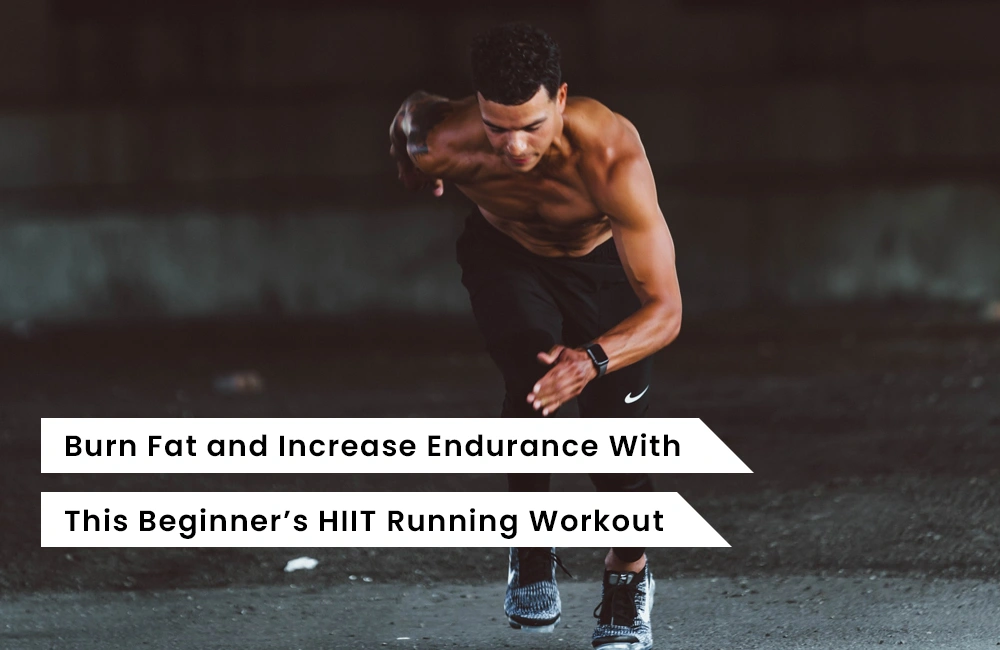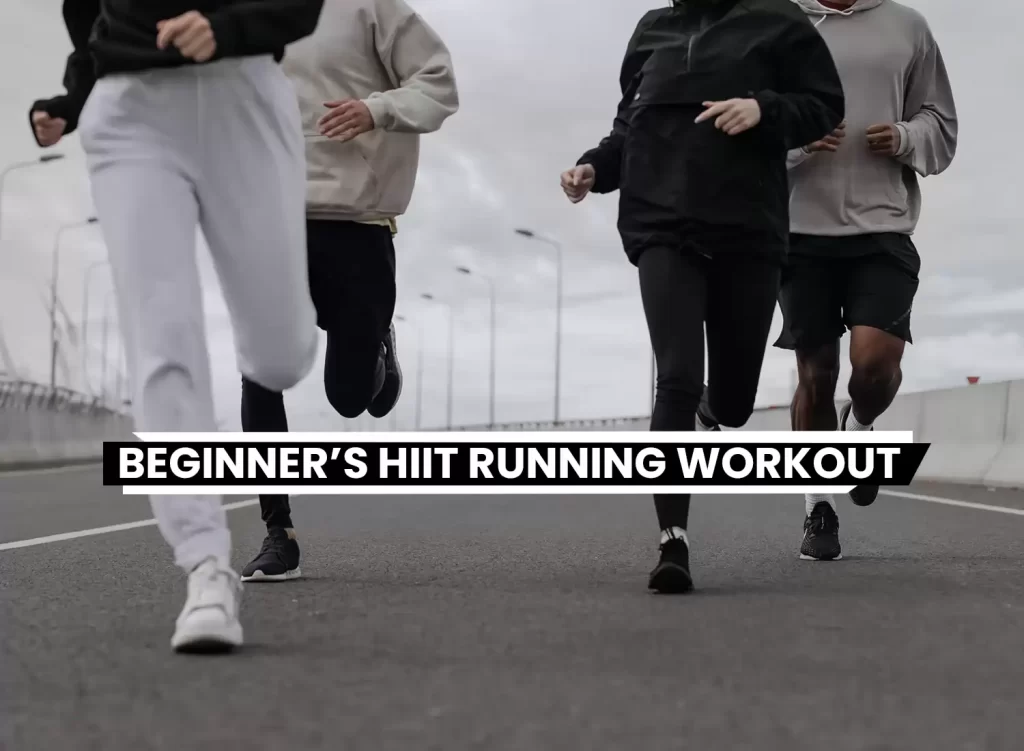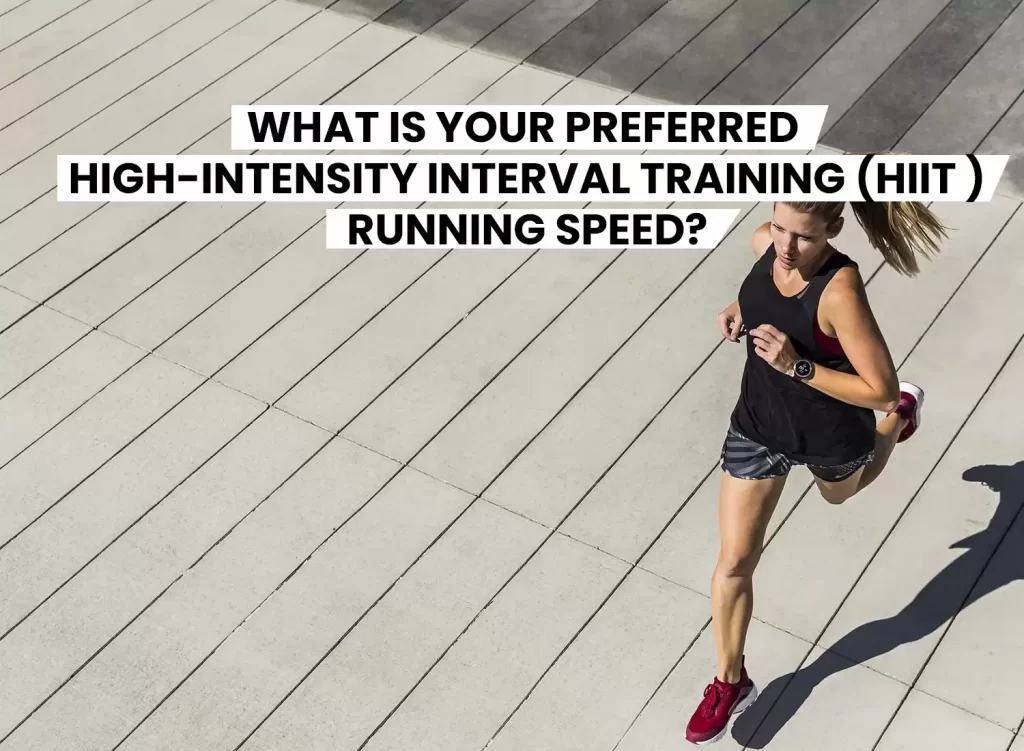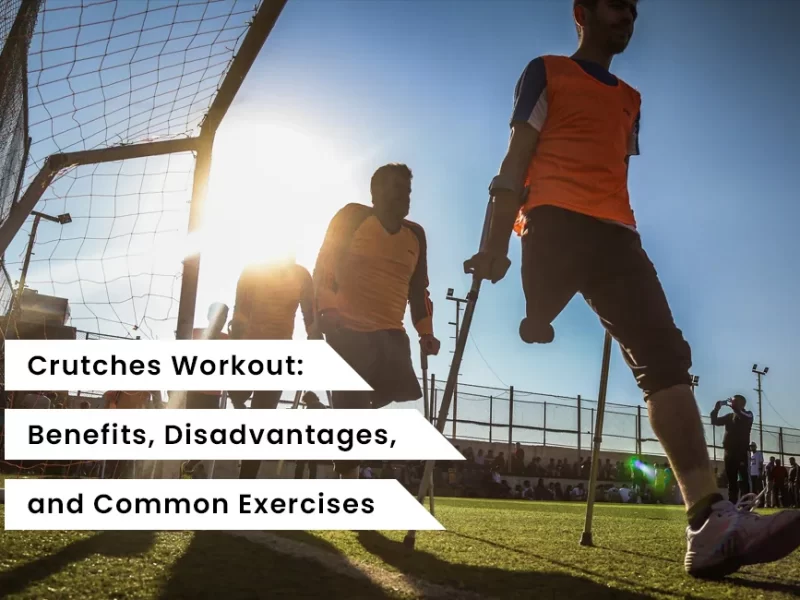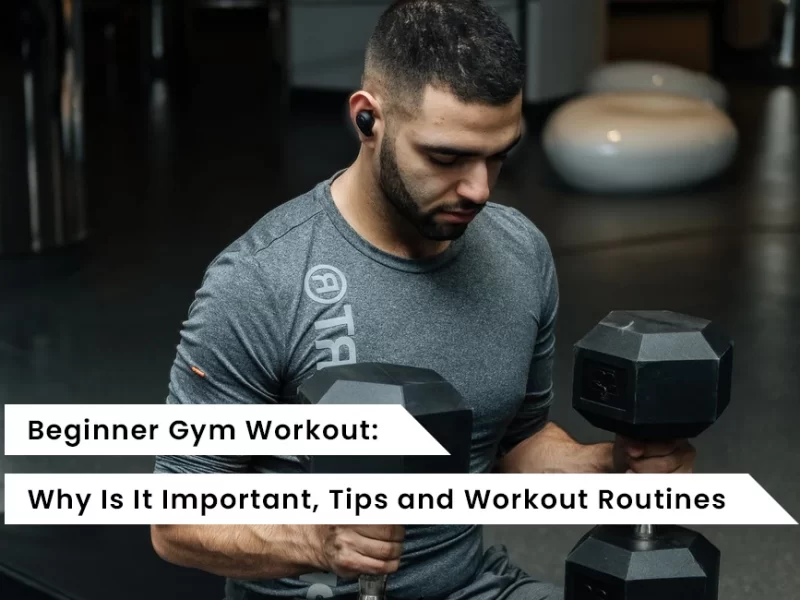You’ve undoubtedly heard that running intervals may help you enhance your aerobic capacity, endurance, stamina (exercise tolerance), and speed if you’re ready to take your running workouts to the next level.
And if you’re looking to improve your general fitness, you undoubtedly already know that high-intensity interval training, or HIIT, is one of the most effective ways to do it.
A high-intensity interval training (HIIT) running program takes basic intervals to the next level. Any workout that alternates between periods of effort and times of recuperation is known as interval training. HIIT is a sort of interval training in which you alternate between strong bursts of activity (about 80 to 90% of your maximal heart rate) and brief rest intervals.
Beginner’s HIIT Running Workout
Are you ready to attempt high-intensity interval running? Hilton devised a basic workout that is suitable for beginners.
- Warm up by running for 10 to 15 minutes and then stretching dynamically.
- Run at a high-intensity speed for 30 seconds, aiming for 80 to 90% of your maximum heart rate.
- An easy jog or brisk stroll for 1 to 2 minutes can help you recover.
- Alternate for a total of 8 to 10 rounds of alternating.
- Finish your exercise by jogging for 10 to 15 minutes.
In the end, HIIT running workouts are a great way to burn fat and increase endurance. This beginner’s workout is perfect for those who have never tried interval training before!
How a High-Intensity Interval Training (HIIT) Running Workout Can Help You Perform Better
Conclusion paragraph: The human body is a wonder. If you want to perform better, it can be helpful to understand how your brain and muscles work together. This article has offered some insight into one of the most effective workouts for improving athletic performance- HIIT running.
Including high-intensity intervals in your running routine can help you develop in a variety of ways.
1. Increase your speed and power
Running high-intensity intervals, according to Nick Hilton, an Olympic Trials marathon qualifier, manager of Run Flagstaff specialty store, and Run S.M.A.R.T. Project coach based in Flagstaff, AZ, can help you accumulate more time running at a faster pace than simply trying to run at that pace for as long as you can.
If you merely try to sprint as fast as you can for as long as you can, you’ll rapidly tire yourself. However, if you run hard for 30 seconds and then rest for 1 to 2 minutes, you’ll spend significantly more time training at your maximum speed.
Rather than merely trying to run at your desired speed for as long as you can, this can help your body adapt to the exertion more safely and effectively. You can shorten your recovery intervals as you adjust. “Over time, you’d spend more time at your 5K speed and less time recovering,” Hilton adds.
A high-intensity interval training running workout can help you boost your speed and power. If you’re looking for an effective way to improve your performance on the field or court, HIIT running may be just what you need. The best part is that this type of workout is relatively short, so it doesn’t require a lot of time out of your busy schedule. Are you ready to see how HIIT running can help take your game to the next level?
See also Latissimus Dorsi Workout: What to Know, Main Benefits and Downsides
2. Increase the efficiency of your operations (and Get Faster)
Running economy is a metric that determines the link between oxygen consumption and running speed, or how effectively you run. Furthermore, the better your running economy is, the easier your run will seem, which will allow you to keep a quicker pace. During a 5K running trial, recreational runners who did two HIIT running exercises per week for one month increased their running economy by 7% and their top treadmill speed by 5%, according to 2017 research. In research comparing highly trained runners of equal ability and VO2max, those with the best running economy beat their colleagues.
If you’re looking to improve your overall fitness, increase the efficiency of your operations (and get faster), HIIT running workouts may be just what you need. These short but intense training sessions can help you burn fat more efficiently and boost cardiovascular health in a shorter amount of time than traditional cardio exercise methods. From sprints to hill climbs, there are plenty of ways for runners to incorporate HIIT into their routine. But if these types of exercises sound too difficult or intimidating at first, don’t worry! There’s no shame in starting small with less intense variations before gradually ramping up intensity over time. For instance, try incorporating 30-second bursts instead of going all out from the start.
3. Boost Your Aerobic Fitness
HIIT activities have been demonstrated to boost aerobic fitness indicators in studies. In one research of moderately fit men, HIIT was shown to be more effective than completing the same amount of work at a lower intensity in boosting VO2max and stroke volume (the volume of blood pumped from your heart every beat). In other words, HIIT may improve your body’s capacity to run longer and harder for a shorter period than regular steady-state cardio.
HIIT running workouts have been shown to improve aerobic fitness more than traditional endurance training. If you’re looking for a workout routine that will help you perform better both on and off the track, consider adding a HIIT running program into your weekly routine. Not only will this type of workout help improve your overall physical performance, but it has also been linked with cognitive benefits like improved focus and attention span. Are you convinced? Give HIIT running a try!
Here’s how to transform your running intervals into a high-intensity interval training (HIIT) session.
How to Make a High-Intensity Interval Training (HIIT) Running Workout
Running may easily be turned into a HIIT exercise. All you have to do is alternate sprints (approximately 80 to 90 percent of your maximal heart rate) with active rest periods (think: jogging).
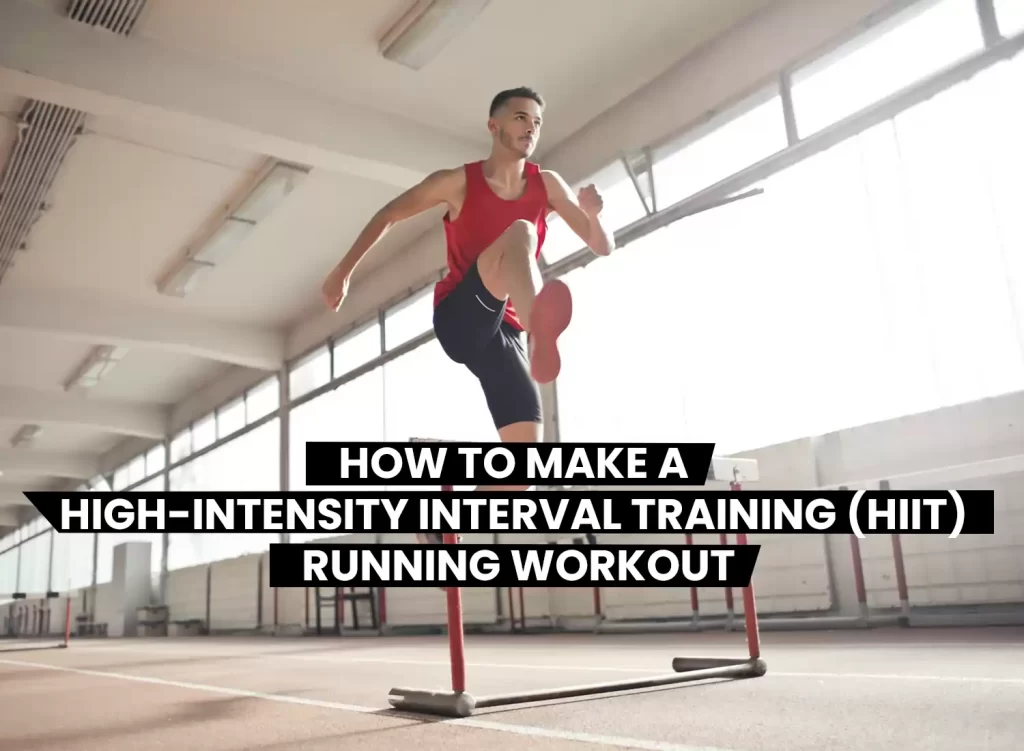
If you’re new to interval training, Hilton suggests adding one HIIT running session each week to your regimen and keeping the work intervals shorter than the rest periods until you’re ready to switch it up.
It’s never been easier to get a workout in at home. You don’t need fancy equipment or expensive memberships – all you need is your commitment and this guide. If you’re ready, let’s go! The post concludes with final information on how to make HIIT running workouts work for anyone who wants a break from their normal routine.
If you are looking for a more effective way to get in shape, HIIT is an excellent option. You can incorporate this type of workout into any fitness regimen and it will help your body burn calories faster while also increasing the effectiveness of other workouts.
What is your preferred HIIT running speed?
You want to pick a speed that’s difficult enough to get your heart rate up to 80 to 90% of your maximum heart rate for your HIIT running session. However, it should not be so difficult that you are unable to repeat the cycle numerous times.
You may also rate your perceived exertion level on a scale of 0–10, with 0 indicating that you’re sitting on the sofa and 10 indicating that you’re working at your utmost full effort (think sprinting up a steel hill). Your HIIT intervals should be between an 8 and a 9 on a scale of one to ten.
So, what is your ideal HIIT running pace? This answer will vary for everyone, so take some time to experiment with different speeds and find the sweet spot that allows you to run at a high intensity without sacrificing your form. Remember, quality trumps quantity when it comes to HIIT running – focus on maintaining good technique throughout each interval, even if that means slowing down a little bit. Once you’ve found your perfect pace, aim to stick with it and see how much improvement you can make in your speed, endurance and overall fitness level.
The most frequently asked questions about
What is a decent high-intensity interval training workout?
Instead, a proper HIIT workout would consist of eight all-out, 20-second sprints separated by one minute of recovery. That means your HIIT program (not including warm-up and cool-down) would be somewhat more than 10 minutes long.
So, what is a decent high-intensity interval training workout? Any workout that includes short bursts of intense activity followed by brief periods of rest or recovery can be considered HIIT. There are countless exercises and variations you can use for your own HIIT routine, so find something you enjoy and get moving!
Can you burn more calories running or should you do a HIIT workout?
The calories expended after 30 minutes of HIIT, weight training, running, and the bike was compared in one research. HIIT burnt 25–30% more calories than other kinds of exercise, according to the study ( 8 ). A HIIT repeat was defined as 20 seconds of peak effort followed by 40 seconds of recovery in this study.
Some people believe that it is possible to burn more calories running than doing a HIIT workout. Other people think the opposite, and they may be correct because there are different factors at play in each exercise regimen. It depends on your fitness level, what type of running you’re doing (are you sprinting or jogging), how long you do the activity, etc. Which opinion do you lean towards? What’s your experience been like with these two types of workouts?
Alternating running and high-intensity interval training
When scientists talk about high-intensity interval training (HIIT), they’re talking about workouts that alternate hard-charging intervals, in which a person’s heart rate reaches at least 80% of maximum capacity for one to five minutes, with times of rest or less strenuous activity.
This study shows that you can improve your running performance by mixing up the terrain. For example, if it’s hilly where you live or work, run on flat ground for a little bit and then switch to hills. If there are no hills near you, try interval training workouts with high-intensity bursts of sprinting followed by periods of jogging at a lower intensity. Do this for five minutes before returning to your normal pace thereafter. You may see an improvement in how quickly you’re able to cover distances as well as improvements in endurance levels over time!
Which is better for losing weight: jogging or a high-intensity interval training session?
So, which is better for losing weight? Jogging or a high-intensity interval training session? The answer may surprise you. Studies have shown that both forms of exercise are effective at helping people lose weight in the long run. However, when it comes to burning calories in a shorter period, high-intensity interval training sessions win out every time. If you’re looking to quickly burn off some excess pounds, consider adding a few high-intensity interval training sessions to your weekly routine.
While both forms of interval training (HIIT and sprint) and continuous moderate-intensity exercise helped participants lose weight and body fat, interval training as a whole was more effective. … “In other words, it improves your body’s fat-burning efficiency.”
How many calories does a high-intensity interval training (HIIT) jogging session burn?
Have you ever wondered how many calories are burned during a high-intensity interval training (HIIT) jogging session? A HIIT workout can burn up to 10 times more calories than regular, steady-state exercise. This is because your body needs energy for the muscles being used to power through the intense activity and also because it takes time for your metabolism rate to return after an effort like this. If you’re looking to lose weight or get in better shape, consider trying out some of these workouts and see how they make sense for your fitness goals!
A high-intensity interval training (HIIT) workout is a type of training that involves time intervals. You alternate brief intervals of relaxation with short bursts of intense activity. A 30-minute HIIT workout burns around 290 calories. With the popular 7-minute workout, a 175-pound guy burns roughly 85 calories.
See also Rower Workout: What Is It, Main Benefits and Disadvantages
